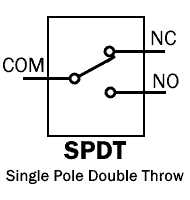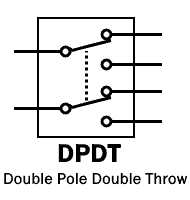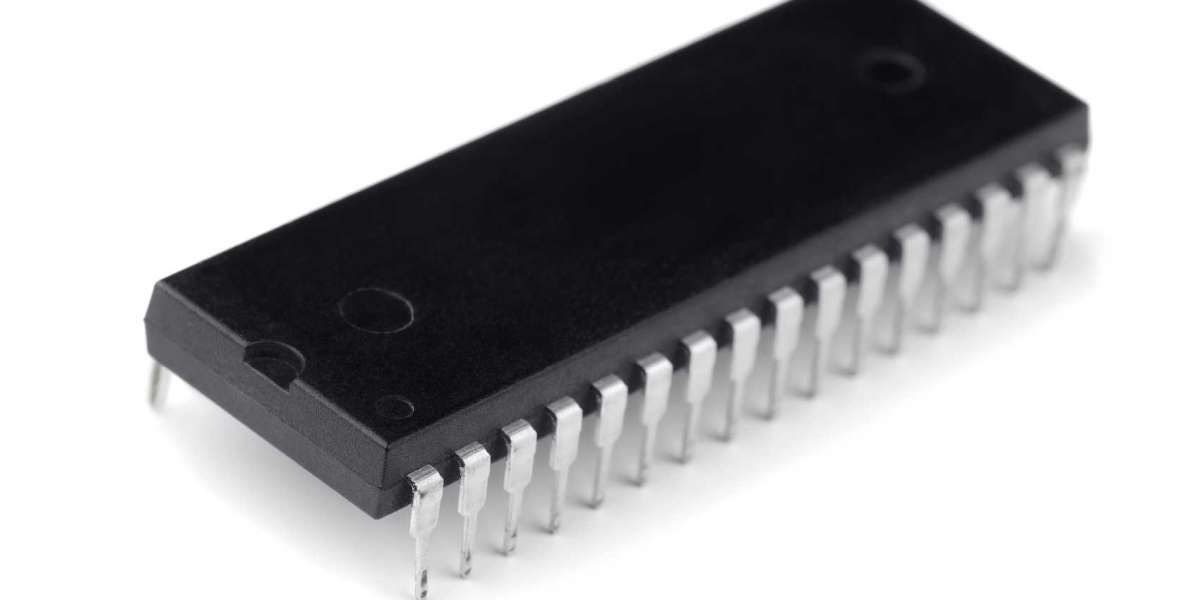Based on Poles Throw:
These following types of relays are classified by the numbers of poles throw inside a relay.
SPST Relay
SPST refers to single pole single throw relay.
The single pole means that it can control only one circuit while the single throw means its pole has only one position in which it can conduct. SPST diagram is given below.

The SPST relay two states I.e. either Open or Close circuit.
SPDT Relay
SPDT refers to single pole double throw relay.
The single pole means it can control only one circuit at a time. The double throw means its pole has two positions in which it can conduct.

The SPDT relay has two states in each state, its one circuit remains closed while the other remains open vice versa.
DPST Relay
DPST refers to double pole single throw.
The double pole means it can control two completely isolated individual circuits. The single throw means that each pole has one position in which it can conduct.

The DPST relay can switch two circuits simultaneously i.e. either providing a close or open circuit.
DPDT Relay
DPDT refers to double pole double throw.
The double pole means it can control two circuits while the double throw means each pole can conduct in two separate positions.

The DPDT relay can be interpreted as two SPDT relays but their switching is simultaneous.
A relay can have as many as 12 poles.
How a Relay Works?
The following animation shows a simplified working of a relay.
- Relay works on the principle of electromagnetic induction.
- When the electromagnet is applied with some current, it induces a magnetic field around it.
- Above image shows working of the relay. A switch is used to apply DC current to the load.
- In the relay, Copper coil and the iron core acts as electromagnet.
- When the coil is applied with DC current, it starts attracting the contact as shown. This is called energizing of relay.
- When the supply is removed it retrieves back to the original position. This is called De energizing of relay.
Application Of Relay
- Relays are used for isolatinga low voltage circuit from high voltage circuit.
- They are used for controlling multiple
- They are also used as automatic change over.
- Microprocessorsuse relays to control a heavy electrical load.
- Overload relays are used for protection of motorfrom overload electrical failure.
Since they are electromechanical devices, relays can wear out eventually and stop working over time. But there are few techniques to test if a relay is working or not. These techniques include:
- Testing a Relay with a Multimeter
- Build a simple circuit to test the Relay
- Use a DC Power Supply to see whether a relay is functioning properly
Conclusion
Bitfoic electronics has rich upstream channel resources in original manufacturers and authorized agents in Europe the US, Southeast Asia, Japan, and South Korea. In addition, we have our own inventory for the downstream channel. Both of these enable us to have a stable supply chain and have the newest information on the market. We provide a one-stop package service for logistic systems. We have cooperated with trustworthy international logistics so as to ensure the delivery time.














